
Jack Kerouac
*
July 23, 2023
by Philip Gambone
It was impossible to grow up in 1960s, as I did, and not read—or at least be aware of—Jack Kerouac's masterpiece On the Road. When I read the novel, I was totally bowled over, not only by the story of Kerouac's travels and youthful, cross-country high jinks—"cutting along in my life," he called it—but also by his hip language and jazzy rhythms that ricocheted around the page. I later learned this was the "beat" prose style he more or less invented.
The final part of On the Road takes place in Mexico, the destination that Sal Paradise, the Kerouac character, sets out for with two of his friends. Apart from keeping his buddies company—"coughing and bouncing down to Mexico" in a '37 Ford—Kerouac was looking for other thrills as well: the easy availability of girls, booze, and drugs.
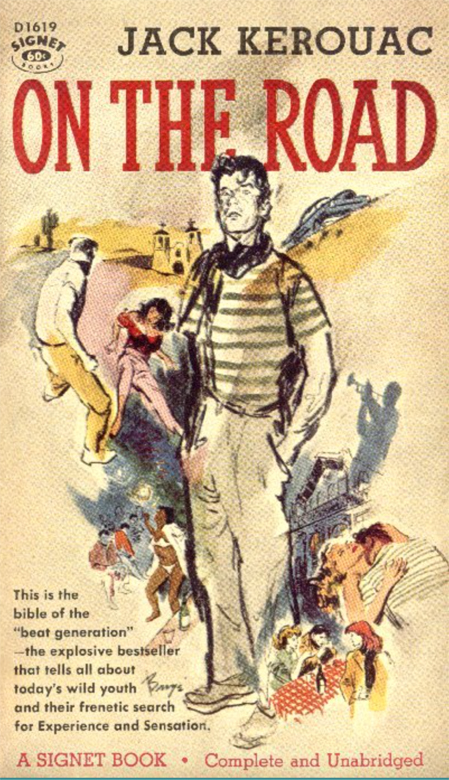
The odyssey described in On the Road was the first of Kerouac's seven trips to Mexico. The country was, says Jorge García-Robles in his excellent little book, At the End of the Road: Jack Kerouac in Mexico, "perhaps the single most important country in Jack Kerouac's life." It was a place that provided him with freedom from the suffocation he felt in the United States with its uptight, post-War culture. While easy access to women and controlled substances was certainly one of Mexico's allures, Kerouac also came for the freedom to write as he pleased.
His first trip was inspired by a letter from fellow beat writer William Burroughs. "Mexico is very cheap," Burroughs wrote his friend. "A single man could live good for $2 per day in Mexico City, liquor included."
In June 1950, Kerouac, his friend Neal Cassady (who became Dean Moriarty in the novel), and another friend heeded Burroughs' call. With Cassady, a "mad Ahab at the wheel," they took off. After his many trips back and forth across the United States—his "raggedy travelings," he called them—Kerouac was excited to be going "no longer east-west, but magic south."
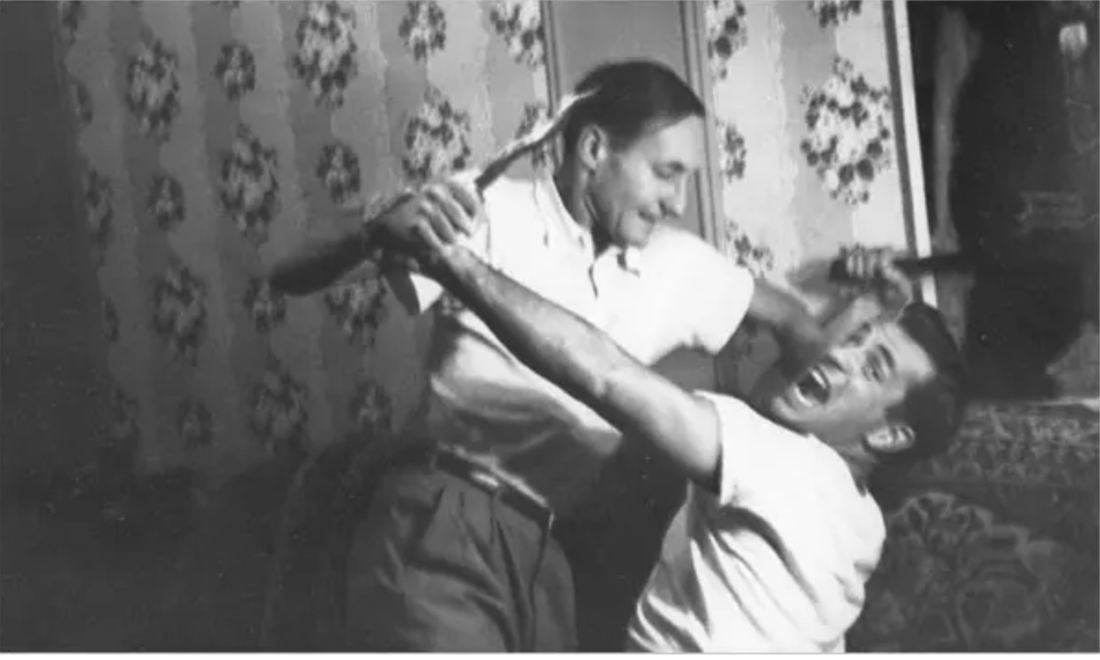
William Burroughs and Kerouac
*
The trio, all in their twenties, set out from Denver. "Red-eyed from the continual mistral-winds," they descended to the Western high plains and then into Texas. Around San Antonio, Jack began to realize that "all this used to be Mexican territory." On to Laredo, where "all kinds of cabdrivers and border rats wandered around, looking for opportunities." Already he could "feel the enormous presence of whole great Mexico and almost smell the billion tortillas frying and smoking in the night."
At the border, their luggage and papers were checked. Then they crossed into Nuevo Laredo, which "looked like Holy Lhasa" to the three Americans. Along the many kilometers more to Mexico City, Kerouac, "alone in my eternity," fell into a reverie. He loved the feeling of "driving across the world and into the places where we would finally learn ourselves among the Fellahin Indians of the world." Fellahin, or fellaheen, as he sometimes spelled it, was an Arabic word Kerouac borrowed to describe "the basic primitive, wailing humanity that stretches in a belt around the equatorial belly of the world." For Kerouac, the fellahin had retained a mystical relationship with the world, something he continually sought.
As they continued to Mexico City, the trio fell into adventures. In Gregoria, they smoked "a tremendous Corona cigar of tea" (marijuana), visited a whorehouse, and drank a lot of booze. Remembering that they were in Mexico "and not in a pornographic hasheesh daydream in heaven," Kerouac and his compañeros moved on, through the dizzying heights of the Sierra Madre Oriental and down into the capital, where "thousands of hipsters in floppy straw hats and long-lapeled jackets over bare chests padded along the main drag, some of them selling crucifixes and weed in the alleys."
"From the instant Jack stepped on Mexican ground," Garcia-Robles writes, "he maintained an unwavering respect for the country that inspired him to religious visions, metaphysical otherness, and commiseration, even as he witnessed its sordidness and monstrous, malodorous filth."
The malodorous filth got him on this first trip. By the time they reached Mexico City, Kerouac had fallen sick with dysentery. He ended up doing no writing, but did take notes for the novel that would eventually become On the Road. In September, he took a bus back to the States.
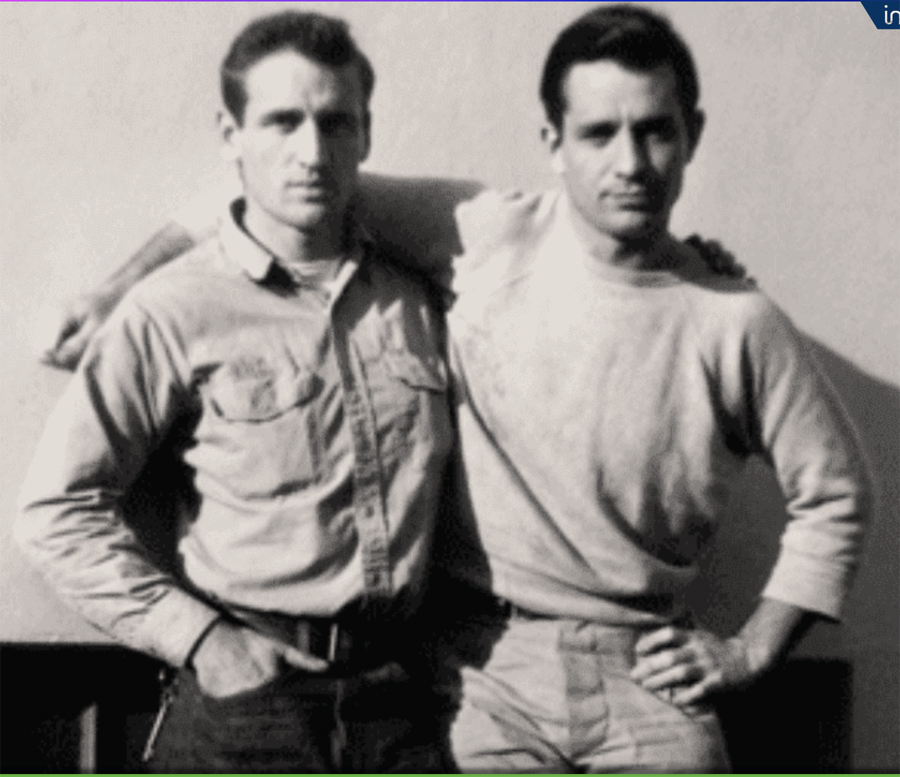
Neal Cassady and Kerouac
*
A little less than two years later, in May 1952, Kerouac made his second trip to Mexico, traveling on a second-class bus ticket. Crossing the border at Nogales, Arizona, he once again experienced "a great feeling of entering the Pure Land," as he later wrote in his book of travel essays, Lonesome Traveler. He found the country "generally gentle and fine, even when you travel among the dangerous characters. In fact, the further you go away from the border, and the deeper down, the finer it is, as though the influence of civilization hung over the border like a cloud."
Kerouac again shared an apartment with Burroughs, who had, eight months earlier, accidentally shot and killed his wife. To get away from Burroughs' guests, he wrote "on a closed toilet seat in a little tile toilet." When they weren't writing, the two attended the Ballet Folklórico, went to the Turkish baths, visited the pyramids at Teotihuacán, and availed themselves of prostitutes. Kerouac also went to his first bullfight. "And I saw," he wrote, "how everybody dies and nobody's going to care, I saw how awful it is to live just so you can die like a bull trapped in a screaming human ring."
An aspect of Mexico more to his liking was the easy access to marijuana. One of the first Spanish words Kerouac learned was chucharro (potsmoker). He ended up smoking a lot of weed, which made him feel that he was "being in God."
All that summer, Kerouac kept working on his novel. "I know you will love On the Road, he wrote to Allen Ginsberg. "It is like Ulysses and should be treated with the same gravity." Kerouac said that he had written the book "with 100% personal honesty both psychic and social," slapping down his ideas "shameless, willynilly, rapidly until sometimes I got so inspired I lost consciousness I was writing." He told Ginsberg he was already worried that publishers would want to edit it to "make the 'story' more intelligible."
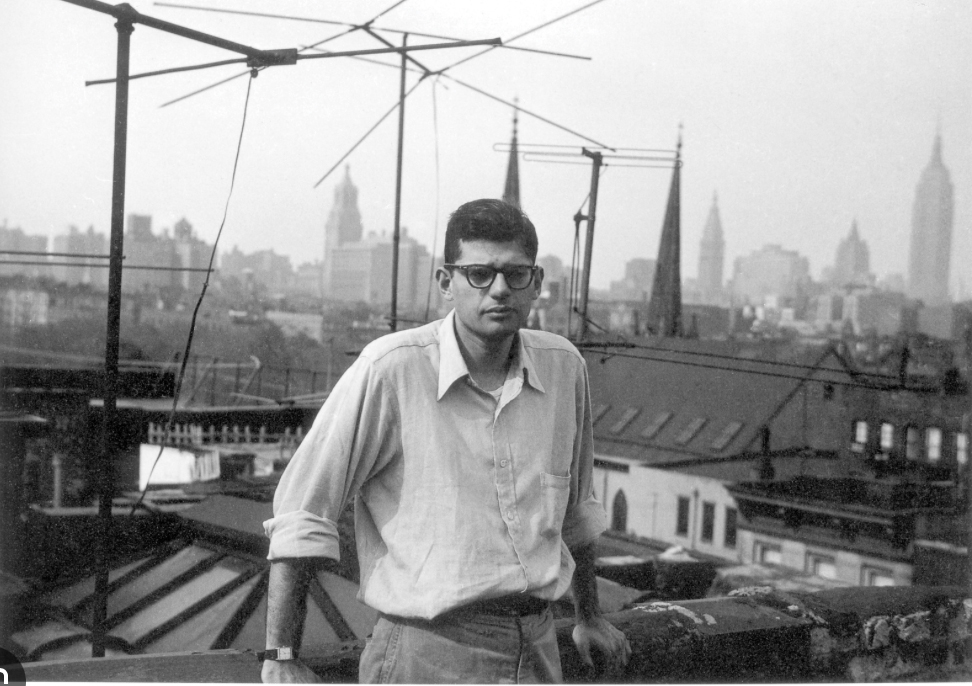
Allen Ginsberg
*
He also started a new novel, Doctor Sax, which he hoped would be "another masterpiece." At night, he would take five-mile hikes around town, "sometimes in the remote out-part slums," where on the "new whore street" he'd pick up prostitutes for "1 peso, no bull."
When On the Road was rejected for publication (Allen Ginsberg privately found it "a holy mess"), Kerouac borrowed Burroughs' last $20 and returned to the States.
In December 1952, Jack was still working on revisions of On the Road, bouncing around from job to job and home to home, when he took off for Mexico again, hoping to recuperate from an attack of phlebitis and lure Neal Cassady's wife, with whom he was carrying on an intense flirtation, to join him. It was a dispiriting three-week jaunt. By Christmas, he hitchhiked back to the States, where he stayed with his mother.
Kerouac's fourth trip—he hitchhiked to Mexico from Texas in August 1955—was "for kicks" and to get a full penicillin treatment for his leg, "minus American doctor bills," he wrote Ginsberg. "I have no eyes for anything but occasional drinking, got sick first day on shit." He was feeling "aimless, ephemeral, inconceivably sad, don't know where I'm going or where." He'd taken up the study of Buddhism and noted that all he wanted now "from here on out, is compassionate, contented solitude."
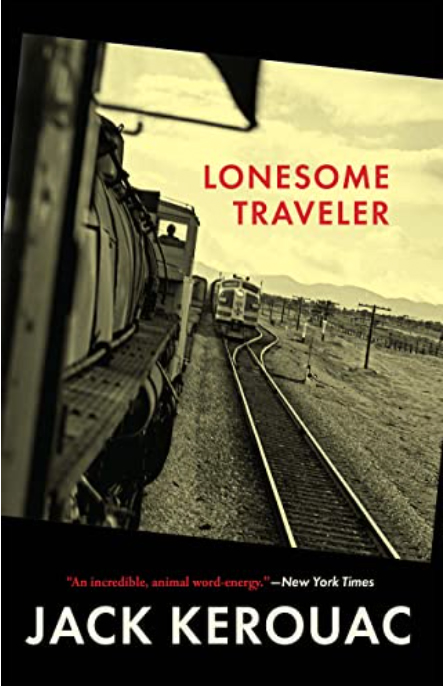
The room he rented was damp and smelly, "far from luxurious," his biographer, Ann Charters, writes, but he was "free to live as he liked, which meant, to begin with, that he could make up for lost time with marijuana and bourbon, especially driving himself 'crazy Miss Greening,'" his expression for smoking marijuana.
During this fourth stay, Kerouac worked on his book of poems, Mexico City Blues. "Poetic masterpieces," he called them, "each one of uniform length and wailing." "The greatest religious poetry I've ever heard," fellow poet Gary Snyder later said.
He returned to the States at the end of August. He got arrested at the border for possession of mescaline. His phlebitis had not cleared up. "Penicillin didn't work with Miss Green," he reported to Ginsberg. On the Road, the novel he'd been working on for years, was still to find a publisher.
There would be three more trips to Mexico between 1956 and 1961. Next week, I'll finish the story of Kerouac's Mexican adventures. It's not always a pretty or uplifting story. Nevertheless, as Joyce Johnson, with whom Kerouac conducted a love affair, has written, Mexico "implanted itself in his mind as a kind of Shangri-la, a land of endless kicks, fantastic beauty, and low prices—a destination that held out the promise of providing a solution to all his problems." Indeed, this land of promise gave Kerouac the quirky freedom to create a body of work that revolutionized American literature.
Part II
**************
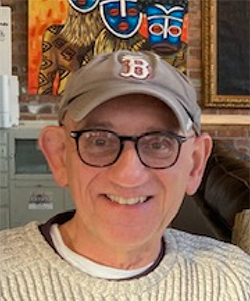
Philip Gambone is the author of five books, most recently As Far As I Can Tell: Finding My Father in World War II, which was named one of the Best Books of 2020 by the Boston Globe, available at the Biblioteca store and Amazon.
**************
*****
Please contribute to Lokkal,
SMA's online collective:
 ***
***
Discover Lokkal:
Watch the two-minute video below.
Then, just below that, scroll down SMA's Community Wall.
Mission

Visit SMA's Social Network
Contact / Contactar

